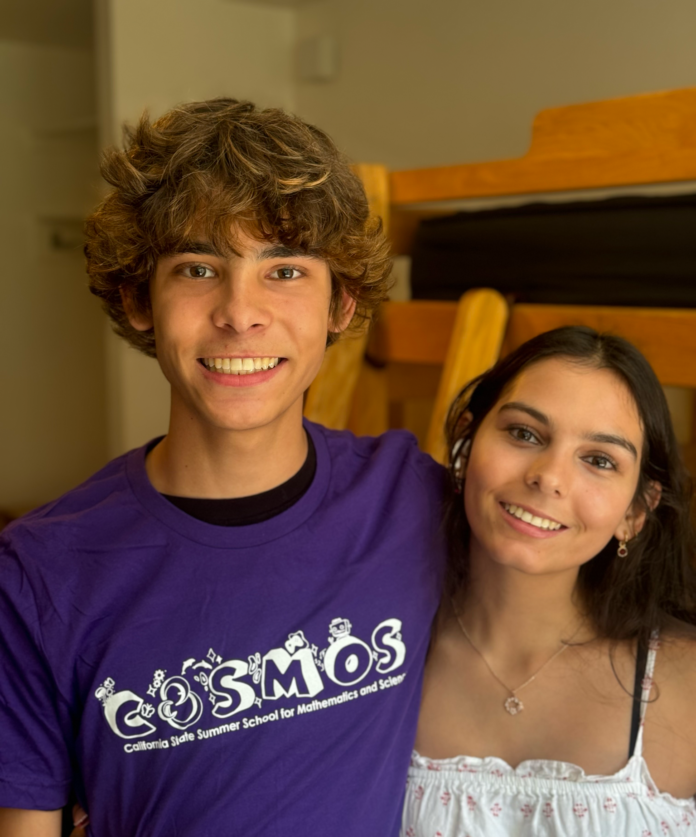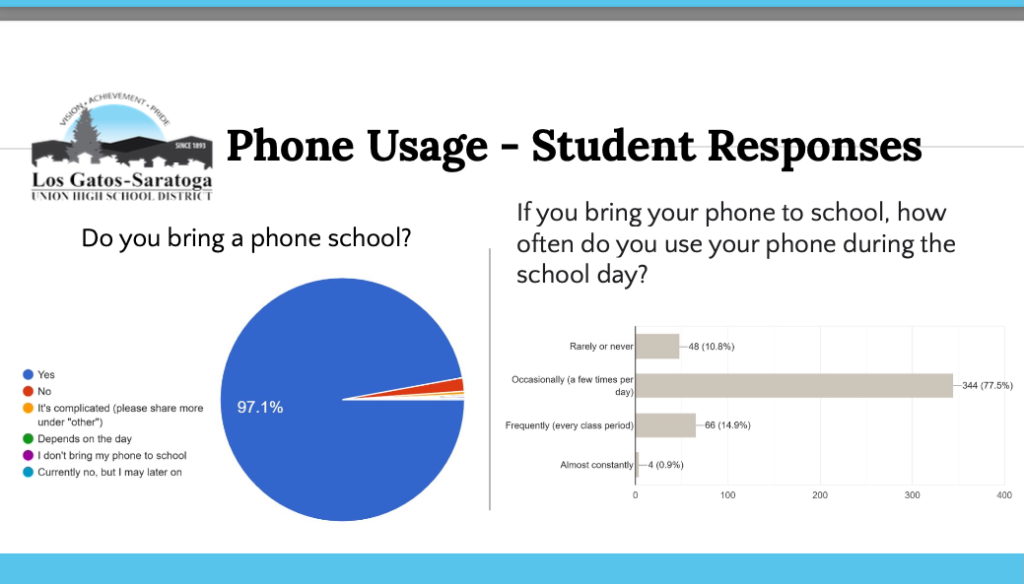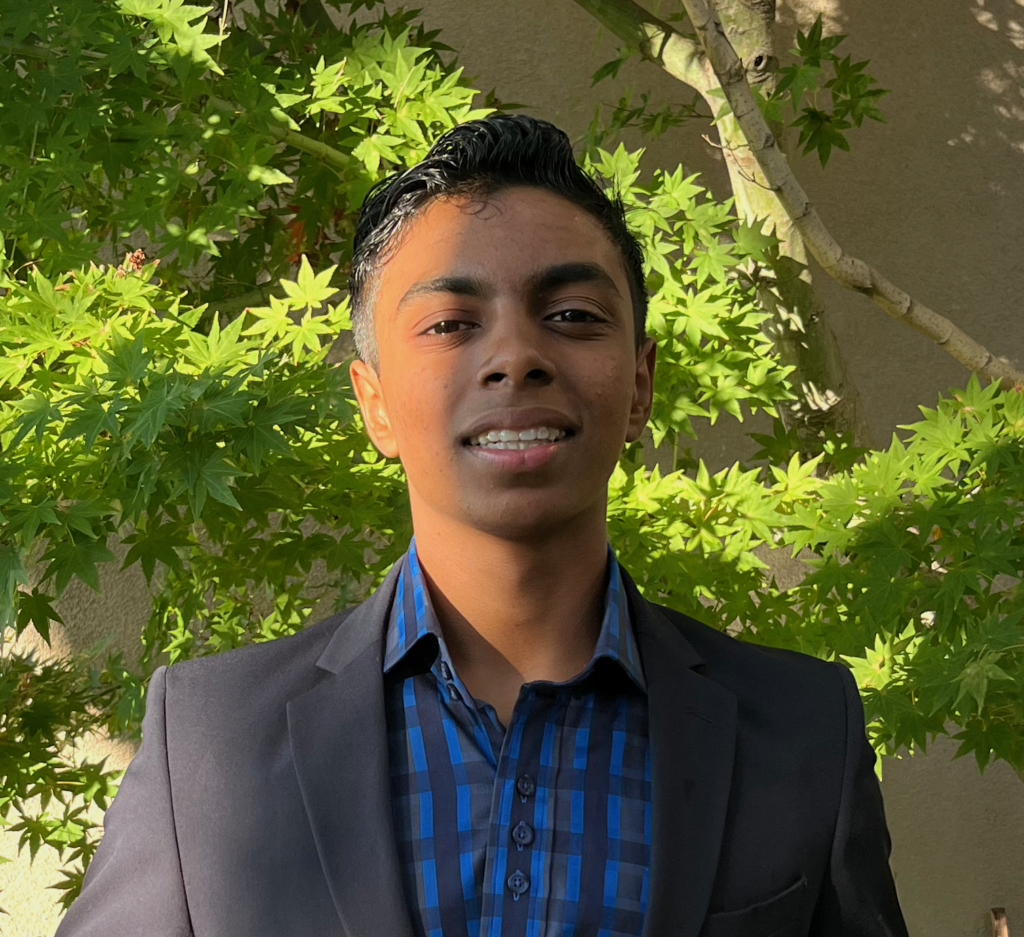
It’s 11pm, and Los Gatos High School junior Eric Jacobson is stuck on a particularly difficult calculus topic. Instead of doomscrolling reels—or giving up—he turns to a study partner who never sleeps: ChatGPT.
“I love (AI), because it explains concepts concisely and efficiently,” Jacobson explained. “Kind of like texting a tutor who’s always awake.”
According to a Pew Research study, 54% of U.S. teens aged 13–17 find it acceptable to use ChatGPT to support their learning, with 26% reporting they use it for schoolwork—double the share from 2023. Among high school juniors and seniors, usage is even higher: 31% report using ChatGPT for schoolwork, compared to 20% of middle-schoolers.
Yet not all students are on board, such as Los Gatos High School junior Isabelle Kusanovich.
“I find it very important to be able to think for myself,” she said, noting her AP Language and Composition teacher slipped an AI-generated essay into a stack he had the class evaluate. “It was the AI-generated essay that was certainly the worst. It really reinforced my negative thoughts on AI.” While she agrees there is value in studying assistance or creating flashcards, she would prefer to spend more time on her own notes. She says this approach has helped her achieve good marks on tests.
Some teachers see AI adoption in education as an opportunity—while also sharing conflicted thoughts about it.
Los Gatos High School teacher Preston Hatfield, who teaches AP Language and freshman English, uses AI not as a shortcut, but as a creative tool.
“There are things that I could do, in theory, but it would take a long time—like the murder-mystery assignment we did,” Hatfield said. “My goal was to practice synthesizing essays in a fun way…It was very easy to ask GPT to do it for me.”

Although he wouldn’t want to make a habit of it, Hatfield says he finds AI helps accomplish meaningful learning within time constraints. He’s used AI in class to randomize elements of learning games, assist students with analyzing writing patterns and tone, and review multiple-choice question errors. He encourages students to paste their essays into ChatGPT for feedback about structure, and for suggestions about revisions they could make.
“There are more nuanced and complicated uses for sure,” he said. “I think it’s limited only by the imagination of teachers and students.” Still, Hatfield draws a line: “Students need to understand the difference between using AI to help what they’re doing—and AI that does what they’re doing.”
Things are a little different in the science department.
Los Gatos High School AP Physics 1 teacher Rachel Peters recalled an exercise where students were asked to write paragraph-length responses about physics concepts, graded with College Board’s AP test rubric. “I put the same prompt into ChatGPT, and it gave an incorrect answer,” Peters said. “So, I showed this to my students to demonstrate that AI isn’t very reliable for solving physics problems, at least with earlier versions.”
And Peters has definitely noticed frequent AI use among students during study periods, especially for subjects like history.
Kusanovich says she’s noticed peers who rely on AI, instead of jotting down notes while reading directly from textbooks, tend to perform worse on tests and writing assignments.
However, not all students are quite so AI-hesitant.
‘If it’s getting so advanced where there’s no way to tell if students are using AI to develop their work or if it’s original, then it washing out or degrades the quality of education’
Rory McKee, a LGHS school counselor
Jacobson says ChatGPT has been quite beneficial for his AP Physics studies, and to help him study Calculus BC—which is equivalent to a college-level course. He also uses it for personal projects.
“I definitely used AI more in school compared to my personal life,” he said, admitting to sometimes using AI to shortcut assignments, but “never in a way that jeopardizes (my) academic success.” In fact, he feels AI has deepened his understanding in both English and STEM classes.
Plus, AI has also supported his extracurricular interests, like building ScoutX, an app his FIRST robotics team, Iron Claw 972, uses. While the majority of the code is his, ChatGPT helped break down complex sections and deepened his understanding of how to pull it all together.
Rory McKee, a Los Gatos High School school counselor for seven years, says he’s already hearing AI comparisons that echo older debates.
“I’ve heard some teachers compare (AI) to a calculator,” he said, “as in, Who needs to know math if you can just use a calculator? Though, I think this is obviously way more complex, with all the potential applications to do both good and harm.”
McKee has used AI to make information more readable and eloquent. Yet, he thinks the impact on education—and even the college admission process—will result in more than just writing touch-ups.
“In the grander scheme, if it’s getting so advanced where there’s no way to tell if students are using AI to develop their work or if it’s original, then it washes out or degrades the quality of education,” he said. “At some point, AI will be too advanced to detect, so admissions won’t know if work is authentic. Essays might become less important, or be eliminated altogether.”
AI is already influencing high-stakes evaluations. A recent MIT Sloan Management Review article reported candidates who used AI during interview prep were rated higher—even if their answers weren’t stronger. Additionally, Columbia student Roy Lee founded a startup that secretly helps users solve LeetCode problems live during interviews, bypassing detection and raising questions about the future of hiring and online assessments.
“The advancement of AI is going too fast for adequate solutions,” McKee said. “For now, we just have to cross our fingers and hope people are honest.”
As AI use becomes more common in class, another tech shift is coming: California’s new Phone-Free Schools Act, signed by Governor Gavin Newsom in September 2024, requires public schools to implement strict limits on student phone use during instructional hours—starting this fall. The law leaves enforcement up to districts, but emphasizes the need to reduce distraction and support student well-being.
So far, the Los Gatos-Saratoga Union High School District hasn’t released a finalized plan. Conversations have included requiring phone holders in every classroom, creating a three-strike disciplinary system, and clarifying whether phones can be used during lunch or tutorials.
“After connecting with our leadership team, we believe that both the Phone-Free policy and the use of AI in our schools are important topics currently under active discussion with our staff,” a spokesperson for the District told the Los Gatan. “We anticipate being in a better position to speak more thoroughly on both areas this fall and would love to reconnect with you then.”
For students, that means looking ahead to next semester with strong opinions—but without much clarity. The topic has been under discussion at the Los Gatos Student Advisory Board.
A recent survey conducted by LGSUHSD found that 97.1% of kids bring their phones every day, with a majority of students believing their devices should be allowed during passing periods and breaks. While some parents and staff think it should be “never,” 0% of students selected that option.
“I think the Phone-Free Act is good, in theory, but it’s really hard to implement all the regulations and punishments regarding the offenses for each infraction,” Pravin Balasingam, a Los Gatos High School junior, wrote. He believes taking away phones at the start of each class will be the most effective approach—alongside participation grades and exceptions for extenuating circumstances. Three-quarters of staff already collect phones at the beginning of class or have some sort of policy, though only a third of staff believe it’s very effective.

The District was scheduled to discuss the Phone-Free policy at the June 10 board meeting.
As students log out for the summer, many are reflecting on how powerful fast-thinking tech has shaped their academic careers, so far—and how it’s bound to continue shifting the traditional educational model for years to come.
In fact, this article itself was outlined with ChatGPT. Could you tell?
*Saara Piplani is going into her senior year at Los Gatos High School. She used Otter.ai and HappyScribe for transcribing assistance with this article. She likes to use ChatGPT to help suggest improvements for some writing projects, though she did not use that AI tool for this piece.









